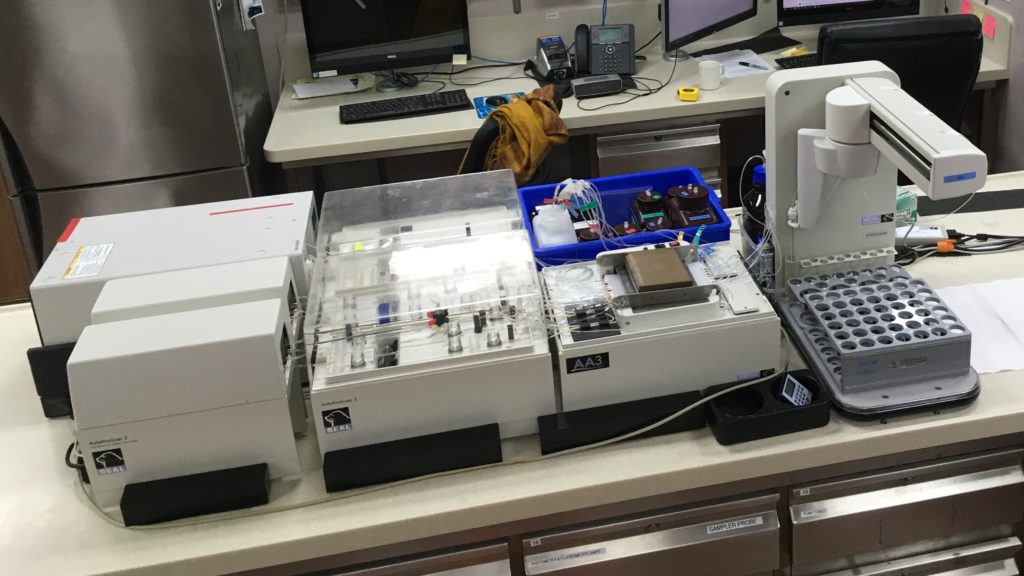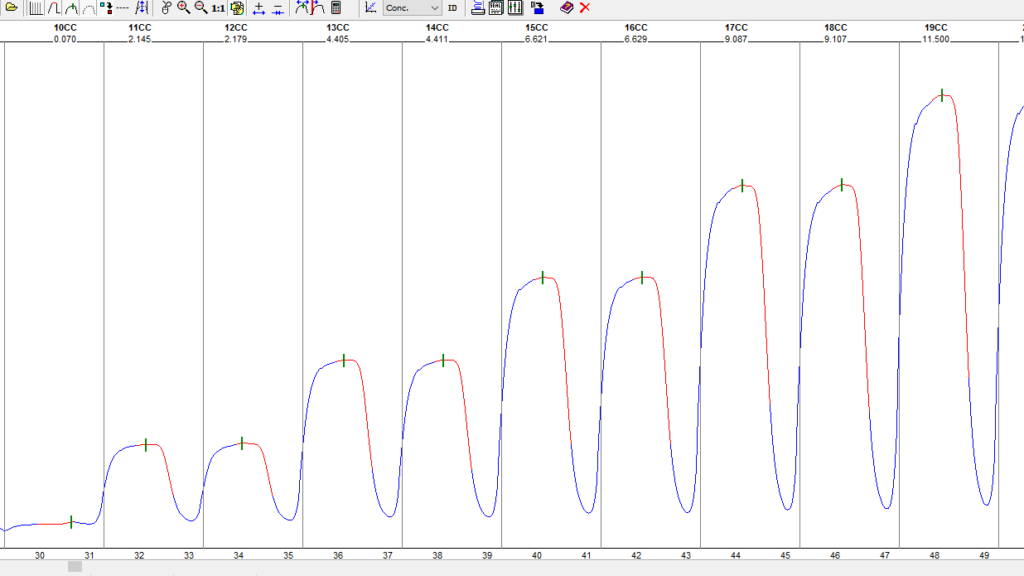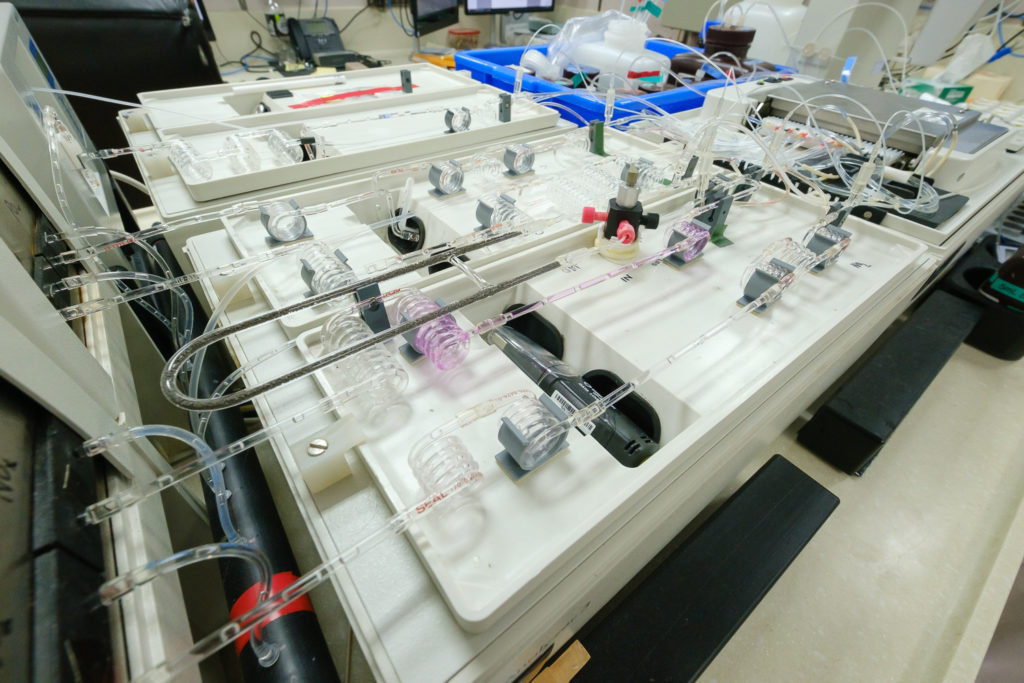Nutrients
Dissolved inorganic macro-nutrients are a vital source of food and energy for microorganisms in the marine environment. They are essential to phytoplankton growth and reproduction. In estuarine waters, they are also key indicators of water quality. In our labs we measure ammonium (NH4+), silicate (SiO44-), phosphate (PO43-), nitrate+nitrite (NOx), and nitrite (NO2–) at a wide range of micromolar concentrations.
The CSIRO Hydrochemistry use a segmented flow auto analyser. This instrument allows the team to produce accurate and precise results consistent with the world’s best practice (GO-SHIP). Currently the team operate three auto analysers; on board the Marine National Facility-RV Investigator and at both shore-based laboratories, located in Hobart and Perth.

The auto analyser setup onboard the RV Investigator.
Nutrients are determined by mixing the unknown water sample with chemicals that cause a colour to develop in solution. The colour is proportional to the amount of nutrient present in the sample and is detected by photometers at particular wavelengths. The unknown sample is compared against known standard nutrient concentrations which form a calibration curve according to the Beer-Lambert law.

The data peaks produced by the nutrient standard calibration curve
The auto analyser pumps the sample continuously from the sample vials and splits it into five chemistry modules – one for each nutrient. Analysing five nutrients at the same time provides nutrient data within a much quicker time frame. The segmented flow analysis (SFA) introduces an air bubble at a regular intervals forming individual reaction segments which allows superior sample and reagent mixing with chemical reactions going to completion, while reducing peak spreading.

Samples and reagents are pumped from their containers (right), though the mixing coils, eventually leading into the detector (left).
Methods and specifications;
| Analyte | Analytical Analysis Range | Detection Limit | Method analysis based on |
| NH4+ | 0 – 2 μmol L-1 | 0.02 μmol L-1 | Roger Kérouel and Alain Aminot (1997) |
| SiO44- | 0 – 140 μmol L-1 | 0.2 μmol L-1 | Current SCRIPPS method based on Armstrong et al. (1967). |
| PO43- | 0 – 3 μmol L-1 | 0.02 μmol L-1 | Murphy and Riley (1962) method with some modifications developed at the NIOZ-SGNOS Practical Workshop 2012 |
| NO3 | 0 – 42 μmol L-1 | 0.02 μmol L-1 | Armstrong et al. (1967) |
| NO2– | 0 – 10 μmol L-1 | 0.02 μmol L-1 | Armstrong et al. (1967) |
All nutrient analysis is currently performed on a SEAL AutoAnalyser3.
A KANSO Certified Reference Material (RMNS) is run with every analytical run.
